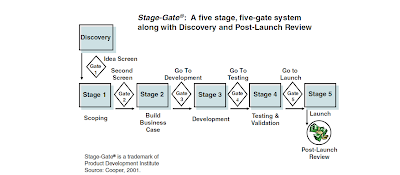The lure of huge online audiences, data-driven metrics, and higher
returns on investment has accelerated the migration of marketing dollars
from old media to new. The largest global marketers are ramping up spending, drawn by the
huge potential opportunities offered by rapidly expanding wealth in the
developing world. Yet the benefits of globalized marketing mask enormous
hidden costs and risks: marketers are accelerating investments in
economies where they typically have only a modest ability to track and
assess results or optimize their return on marketing investment (ROMI).
As these multinational companies throttle forward, they risk stalling
instead, wasting millions of dollars on ineffective marketing
initiatives. More crucially, they are jeopardizing their hard-won
momentum in gaining competitive advantage in the economies now driving
global growth.
There is a better way. Based on our experience in many countries, including Brazil, China, India, Russia, and Vietnam, we have identified five practical steps that marketers can take to jump-start their ability to measure marketing effectiveness in RDEs.
Media spending alone in developing economies increased by up to $60 billion from 2007 through 2012. Total digital-media spending worldwide, meanwhile, rose by about $55 billion. While some of the increased spending in emerging economies includes digital media, much of it is flowing to traditional media, such as television, magazines, newspaper, radio, and outdoor advertising.
Many large companies today spend more on just the advertising portion of their overall marketing budgets than they do on capital investment—often deploying far less analytical rigor in tracking the return on investment. Among a sample of more than 150 Fortune 500 companies that publicly report their advertising expenses, nearly a third devoted as much to advertising as to capital expenditures. Nearly half reported that their advertising expenses rose faster than capital investments over the preceding five years.
One of the world’s 100 largest brands found that the return in its best market was 27 times better than in its worst. Even in well-developed, data-rich markets like Japan, the U.S., and Western Europe, many companies are still frustrated by their inability to measure and optimize marketing performance. Difficulties are often compounded in developing markets, where the challenges can include the following:
There is a better way. Based on our experience in many countries, including Brazil, China, India, Russia, and Vietnam, we have identified five practical steps that marketers can take to jump-start their ability to measure marketing effectiveness in RDEs.
Media spending alone in developing economies increased by up to $60 billion from 2007 through 2012. Total digital-media spending worldwide, meanwhile, rose by about $55 billion. While some of the increased spending in emerging economies includes digital media, much of it is flowing to traditional media, such as television, magazines, newspaper, radio, and outdoor advertising.
Many large companies today spend more on just the advertising portion of their overall marketing budgets than they do on capital investment—often deploying far less analytical rigor in tracking the return on investment. Among a sample of more than 150 Fortune 500 companies that publicly report their advertising expenses, nearly a third devoted as much to advertising as to capital expenditures. Nearly half reported that their advertising expenses rose faster than capital investments over the preceding five years.
One of the world’s 100 largest brands found that the return in its best market was 27 times better than in its worst. Even in well-developed, data-rich markets like Japan, the U.S., and Western Europe, many companies are still frustrated by their inability to measure and optimize marketing performance. Difficulties are often compounded in developing markets, where the challenges can include the following:
- Lack of accurate sales volumes and point-of-sale transaction data
- Absence of accurate and consistent media delivery and exposure data, such as gross rating points and circulation
- Poor-quality sampling and market-research panels that undermine the use of many traditional tools for gaining consumer insight
- Opaque cost-accounting practices among marketers, their
agencies, and media companies, including significant—but
invisible—rebates
- High turnover at thinly staffed commercial organizations that hinders data tracking and analysis
Five Steps for Jump-Starting RDE Marketing Measurement:
- Build your team
- Work with what you’ve got
- Develop a “common currency”
- Map the road ahead
- Anchor the roots- anchor the roots of your marketing-effectiveness efforts firmly throughout your organization.




































